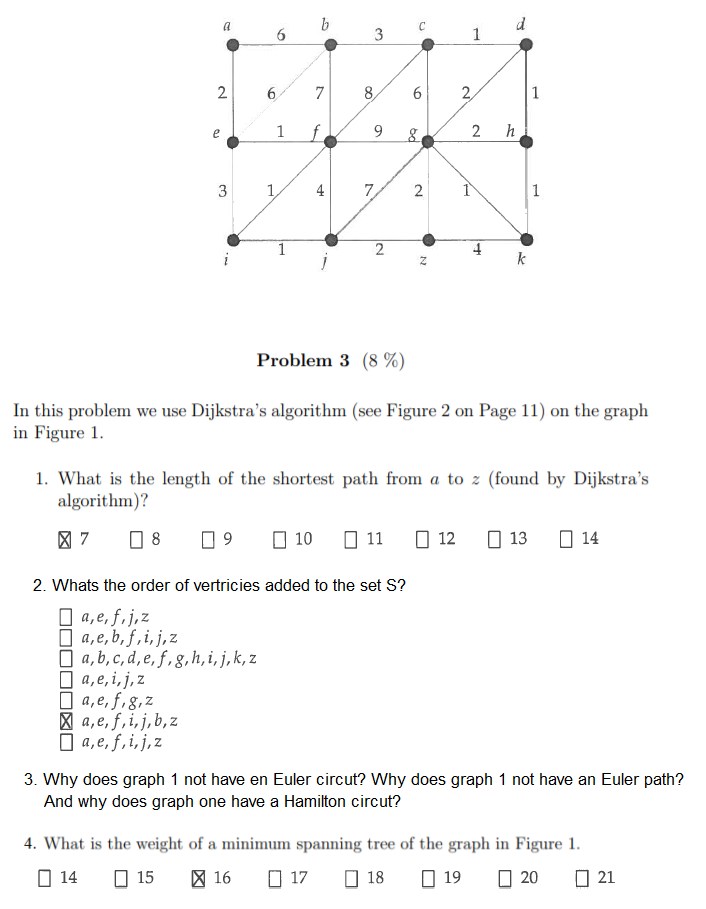Answered step by step
Verified Expert Solution
Question
1 Approved Answer
Discrete math: Every answer to every question is given below. However, the calculations are not given. The task for you who accepts this problem is
Discrete math:
Every answer to every question is given below. However, the calculations are not given.
The task for you who accepts this problem is to show all calculations for every question below

Dijkstra's algorithm is given below 
Step by Step Solution
There are 3 Steps involved in it
Step: 1

Get Instant Access to Expert-Tailored Solutions
See step-by-step solutions with expert insights and AI powered tools for academic success
Step: 2

Step: 3

Ace Your Homework with AI
Get the answers you need in no time with our AI-driven, step-by-step assistance
Get Started


